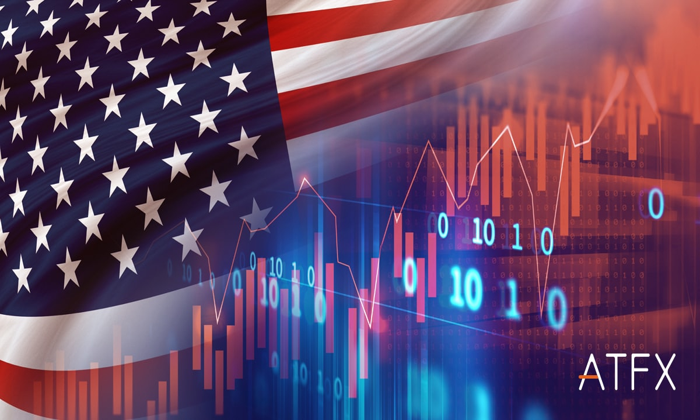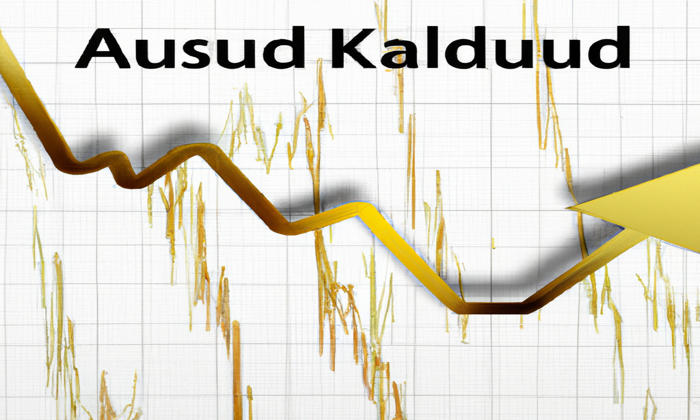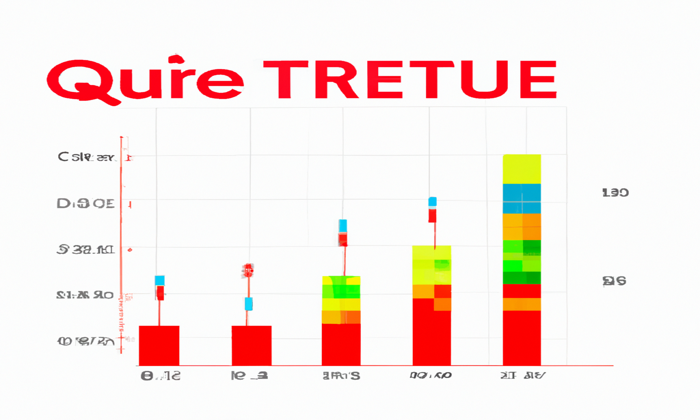U.S. stocks surged on Wednesday, buoyed by signs of easing tensions regarding tariffs from President Donald Trump and reassuring statements from Federal Reserve Chair Jerome Powell. The U.S. stock market witnessed notable gains, with the Dow Jones Industrial Average jumping 419 points and the S&P 500 rising 1.6%, while the NASDAQ performance shone brightly with a 2.5% increase. Market sentiments shifted positively as Trump affirmed his intention to maintain Powell in his role, alleviating fears that had plagued the markets for weeks. Additionally, the prospect of a reduction in the steep 145% tariffs on Chinese goods sparked optimism among investors. Although tensions remain, it’s clear that U.S. stocks are reacting favorably to these developments, reflecting complex investor sentiment in a fluctuating economic landscape.
In the ever-evolving landscape of American equities, the recent performance of U.S. stocks illustrates a significant bounce back driven by key political and economic developments. The stock exchange dynamics reveal a marked improvement following news of a potential decrease in trade tariffs and supportive remarks from the Federal Reserve. Analysts are noting a shift in investor mood, with a positive tilt towards growth in technology sectors reflected in robust NASDAQ figures. Such fluctuations in the U.S. equity arena highlight not only the impact of fiscal policies but also the broader implications for global markets. As traders navigate this complex environment, understanding these signals becomes crucial for making informed investment decisions.
Impact of Trump Tariffs on the U.S. Stock Market
The fluctuations in the U.S. stock market can often be traced to external factors such as trade policies initiated by the government. Recently, President Donald Trump signaled a more conciliatory approach towards Chinese tariffs, greatly influencing investor sentiment. When potential rollbacks of the steep tariffs are hinted at, as they were this past week, we see substantial upticks in key indices. This reaction emphasizes how sensitive the market is to trade relations and tariff negotiations, and investors are eager for any signals of potential improvements.
Despite the positive market response, it is essential to remain cautious. Treasury Secretary Scott Bessent’s statements suggested that while discussions are positive, expectations should be managed. This balancing act between optimistic projections and realistic fears of a trade war illustrates the volatility inherent in the U.S. stock market. Affected sectors like technology, which includes key players like Apple and Nvidia, saw their stocks rise, yet the broader implications of tariff policies will continue to shape market performance.
Federal Reserve News and Its Effect on Investor Sentiment
The Federal Reserve plays a crucial role in shaping investor sentiment within the U.S. stock market. Recent remarks from Fed Chair Jerome Powell provided much-needed reassurance to the markets after weeks of uncertainty. His commitment to serving the economy and maintaining stable interest rates eased worries that had been creeping into investor outlooks. When the Fed is seen as stable and supportive, it typically results in a more favorable environment for stocks, evident in the recent surge of the Dow Jones and the S&P 500.
However, investor sentiment is complicated by macroeconomic factors. Concerns surrounding inflation and potential recession risks loom over the market. As firms like BCA Research warn of underpriced recession dangers, it reminds investors that while the Fed’s stance can provide temporary comfort, the underlying economic indicators will ultimately dictate market performance. Therefore, savvy investors continue to watch Federal Reserve news closely for any hints of policy changes that could affect their investment strategies.
NASDAQ Performance Surge Amid Easing Tariff Concerns
The recent performance of the NASDAQ, especially its remarkable 2.5% gain, showcases the tech sector’s responsiveness to changing economic narratives. Many investors pivoted toward technology stocks as easing tariffs on Chinese imports led to optimism about future demand. Companies like Nvidia and Tesla, known for their heavy Chinese market dependencies, saw significant spikes in stock prices, indicating that investor sentiment is highly influenced by both policy changes and market expectations.
However, the gains in the NASDAQ are not solely attributable to external trade factors. Investors should also consider the fundamental strength of tech companies, with upcoming earnings reports likely to drive further interest. Despite potential volatility ahead, particularly as BCA Research highlights recession risks, the NASDAQ’s performance indicates robust investor confidence in the tech sector’s growth trajectory. Therefore, watching this index may provide insights into broader market trends.
Understanding Investor Sentiment in Today’s Market
Investor sentiment remains a driving force in today’s fluctuating stock market environment. Recent developments, such as the announcement from President Trump regarding his support for the Federal Reserve, have significantly impacted how investors assess risk. Increased confidence, as illustrated by the Dow’s impressive gain, shows that sentiment can rapidly shift in response to policy news. However, analysts caution that this sentiment can be fragile, especially amidst conflicting signals regarding tariffs and economic forecasts.
To navigate the current market landscape, investors must remain attuned to both geopolitical and economic developments. Sentiment can be influenced by news events or shifts in policy, making it imperative for investors to analyze data and forecasts critically. While optimism may lead the market upward, caution should be practiced to mitigate risks associated with potential downturns. In essence, staying informed is key to making strategic investment decisions.
The Role of Treasury Officials in Market Tone
Treasury officials play a pivotal role in shaping the tone of the market, particularly in times of uncertainty. Statements from Treasury Secretary Scott Bessent highlighted the ongoing complexities of U.S.-China trade relations, tempering expectations despite potential negotiations. Investors closely interpret these comments to gauge future market behavior, as any perceived lack of commitment in talks can lead to immediate market reactions.
The dual nature of optimism and caution evident in Bessent’s comments reflects the broader market sentiment, making it essential for investors to analyze such positions carefully. As the discussion around tariffs fluctuates, understanding the implications of Treasury statements on investor behavior can provide keen insights into market movements. In today’s climate, where volatility is common, these perspectives are more critical than ever.
Skepticism Amidst Optimism: A Long-term Perspective
Despite the optimistic performance of U.S. stocks in the recent trading sessions, long-term investor skepticism remains relevant. The sentiments expressed by institutions like BCA Research highlight pervasive fears surrounding potential recession risks and economic sluggishness. While short-term gains can be enticing, discerning investors recognize that the overall economic landscape could curtail longer-term growth prospects.
As investors consider strategies to navigate such uncertainty, it becomes essential to approach the market with a mindset grounded in both optimism and realism. Being well-informed about both macroeconomic trends and corporate performance, particularly in light of government policies, equips investors to weather potential storms ahead while capitalizing on temporary spikes in the U.S. stock market.
Key Technology Stocks Driving Market Growth
The U.S. stock market’s recent upward trajectory is heavily influenced by key players within the technology sector. Stocks like Apple, Nvidia, and Tesla have shown impressive resilience and growth, responding positively to shifts in trade policy and market sentiment. With increasing demand for tech products and services and a favorable tariff outlook, these companies represent significant opportunities for investors looking for growth in turbulent times.
As competition intensifies and new innovations emerge, the tech sector’s influence on the overall market will continue to grow. However, investors must remain cognizant of external factors that could impact performance, such as regulatory changes or shifts in consumer preferences resulting from economic conditions. Overall, keeping a close eye on these technology stocks will be critical for understanding broader trends within the U.S. stock market.
Navigating Volatility: Strategies for Investors
With the U.S. stock market frequently experiencing fluctuations due to external economic factors, investors need robust strategies to navigate this volatility. One critical approach involves diversifying portfolios to mitigate risks associated with sudden market shifts. Investors can spread their investments across various sectors to reduce potential losses while capitalizing on gains from specific areas, such as the recently performing tech stocks.
Additionally, adopting a disciplined investment strategy helps in managing emotions during market downturns. Investors should set clear objectives and use tools like stop-loss orders to protect their portfolios. By staying informed about macroeconomic trends and global trade developments, investors can make calculated decisions that align with their risk tolerance, ultimately leading to more stable long-term growth.
Frequently Asked Questions
How are U.S. stocks impacted by Donald Trump tariffs?
U.S. stocks are significantly influenced by Donald Trump tariffs, as changes in trade policy can lead to fluctuations in investor sentiment. Recent signals from Trump indicating a softer stance on tariffs have positively impacted stock performance, particularly in technology sectors that rely on imports from China.
What is the current performance of the U.S. stock market including the NASDAQ?
As of the latest update, the U.S. stock market has shown encouraging performance with the NASDAQ jumping 2.5%. The overall gains in the market are attributed to favorable news from the Federal Reserve and easing tensions surrounding U.S.-China trade tariffs.
How does Federal Reserve news affect U.S. stocks?
Federal Reserve news plays a crucial role in shaping U.S. stocks. Comments from Fed Chair Jerome Powell alleviating fears of instability have reassured investors, contributing to market gains. Positive guidance from the Fed typically boosts investor sentiment, leading to higher stock prices.
What is the relationship between investor sentiment and U.S. stock performance?
Investor sentiment directly correlates with U.S. stock performance; when sentiment is high, stocks generally rise, whereas concerns about economic stability can lead to declines. Recent fluctuations in sentiment due to tariff discussions and Fed news have shown this impact distinctly in the market.
What should investors know about U.S. stock market trends amidst geopolitical tensions?
Investors should be aware that U.S. stock market trends can be heavily affected by geopolitical tensions, such as those surrounding tariffs. While recent hints from the Trump administration about potential tariff rollbacks have created a temporary boost, ongoing economic indicators signal caution due to underlying recession risks.
| Key Point | Details |
|---|---|
| U.S. Stock Market Gains | The Dow Jones Industrial Average rose 419 points (1.07%), S&P 500 climbed 1.6%, and Nasdaq jumped 2.5%. |
| Trump’s Stance on Tariffs | President Trump signaled a softer approach to Chinese tariffs, mentioning a reduction in 145% tariffs. |
| Powell’s Reassurance | Investor concerns were calmed as Trump stated he would not fire Federal Reserve Chair Jerome Powell. |
| Market Reaction to Tech Stocks | Tech companies like Apple, Nvidia, and Tesla saw gains, with increases of 3%, 4%, and 5% respectively. |
| Concerns about the Economy | Experts warn of recession risks, citing weak labor markets and slow business investments. |
| Bitcoin Performance | Bitcoin gained approximately 2.5%, trading at about $93,700. |
Summary
U.S. stocks showed significant gains on Wednesday, driven by President Trump’s easing of tariffs and support for Federal Reserve policies. The market’s positive response reflects ongoing investor interest but is tempered by caution regarding economic indicators and trade policies. Balancing optimism with realistic expectations will be key as the market navigates these complexities.
U.S. stocks saw a significant rebound on Wednesday as investors responded positively to remarks from President Donald Trump, who appeared to adopt a more conciliatory approach towards Chinese tariffs. The optimism propelled the Dow Jones Industrial Average upwards by 419 points, equating to an impressive 1.07% increase, while the S&P 500 also recorded a healthy 1.6% boost. Dominating the market’s performance was the NASDAQ, which surged 2.5% as tech stocks regained momentum. This surge was further supported by Federal Reserve Chairman Jerome Powell’s reassurances that quelled previous investor fears regarding monetary policy. As market sentiment fluctuated, the interplay of tariff discussions and Federal Reserve news remained front and center, illustrating the complex landscape that shapes U.S. stocks today.
The American equity market is currently navigating a turbulent yet promising landscape, with various factors influencing trading behaviors and investment decisions. Major stock indices, including benchmarks like the Dow and S&P 500, are reflecting changing dynamics, including announcements from government officials concerning trade tariffs and monetary policy. Recent Federal Reserve communications are playing a critical role in shaping market perceptions, especially as they relate to investor confidence. Amid these developments, the performance of technology-focused indices, like the NASDAQ, has been particularly noteworthy, attracting attention from various segments of the investment community. As trade tensions ease, the overall investor sentiment is evolving, providing opportunities for market participants.














